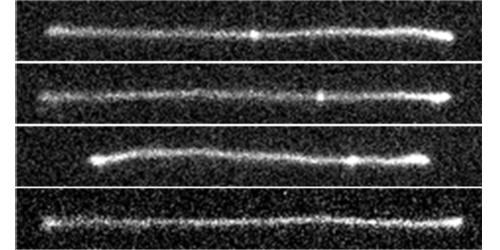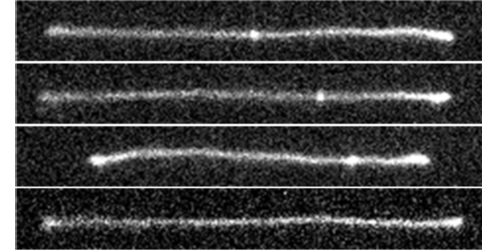Untying DNA Knots
Like most strings and cables, biopolymers—molecular ropes—can tangle and knot. Now Patrick Doyle and colleagues from the Massachusetts Institute of Technology, Cambridge, have demonstrated a technique for untying a biopolymer, in this case DNA, by stretching the strand. The team says that their technique could be used to create knot-free DNA strands for genome mapping, where knots can lead to misreading of genes.
A DNA strand behaves much like a snake jiggling back and forth in a narrow tube, driven by thermal energy. Simulations show that if the strand is stretched, this back and forth motion causes a knot to move along the strand until it reaches one end and unties. Under certain conditions, the simulations also indicate that knots can travel faster than they would by diffusion. But there hasn’t been any experimental confirmation of these predictions.
To test these ideas, Doyle and his colleagues designed a setup that uses an electric field to trap and stretch a knotted DNA strand. DNA is charged, so a homogeneous field would push the strand in one direction. But the trap field was zero at the strand’s center and increased in strength toward both ends, setting up a “tug of war” in the strand. Using fluorescence microscopy, the team confirmed that the knot, initially located near the strand’s center, traveled toward an end before untying. The knot accelerated as it moved, influenced by the strengthening electric field. However, suddenly increasing the applied field stopped the knot in its tracks. The team suggests that this knot immobilization arises from increased friction in the knot, a result of the strand tension going beyond that needed to simply move the knot.
This research is published in Physical Review Letters.
–Katherine Wright
Katherine Wright is a Contributing Editor for Physics.





